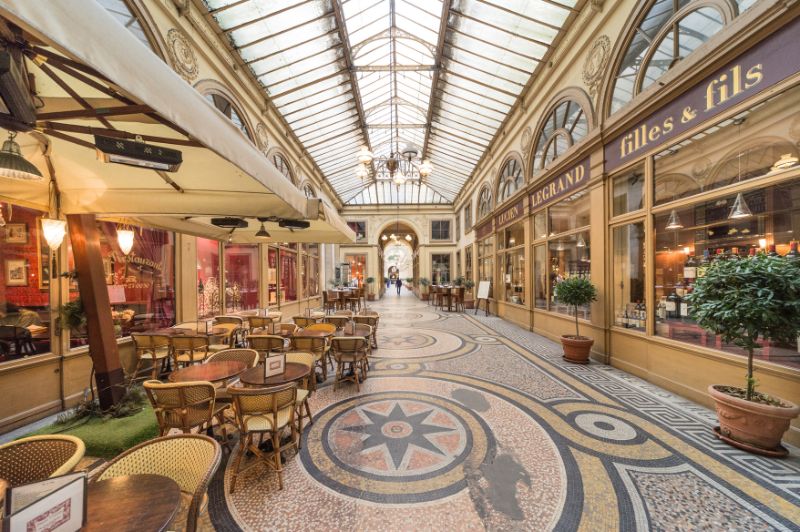7 Greatest Passages in Paris
The covered passages of Paris were the first version of modern shopping arcades. They were built in the early 19th century, and by 1867, there were about 183 of them. Today, only 25 still exist. Most are on the Right Bank of the Seine.
The passages are pedestrian-only, with glass ceilings and decorated interiors. Small shops line the ground floor, selling books, antiques, and fashion. Historically, apartments often occupied the upper floors. Gas lamps originally lit the passages at night. The passages were social hubs, with famous people living there or visiting often.
Here are 10 of the most stunning covered passages in Paris, selected for their well-preserved structures, distinctive atmosphere, and cultural stories.
Galerie Vivienne (1823)
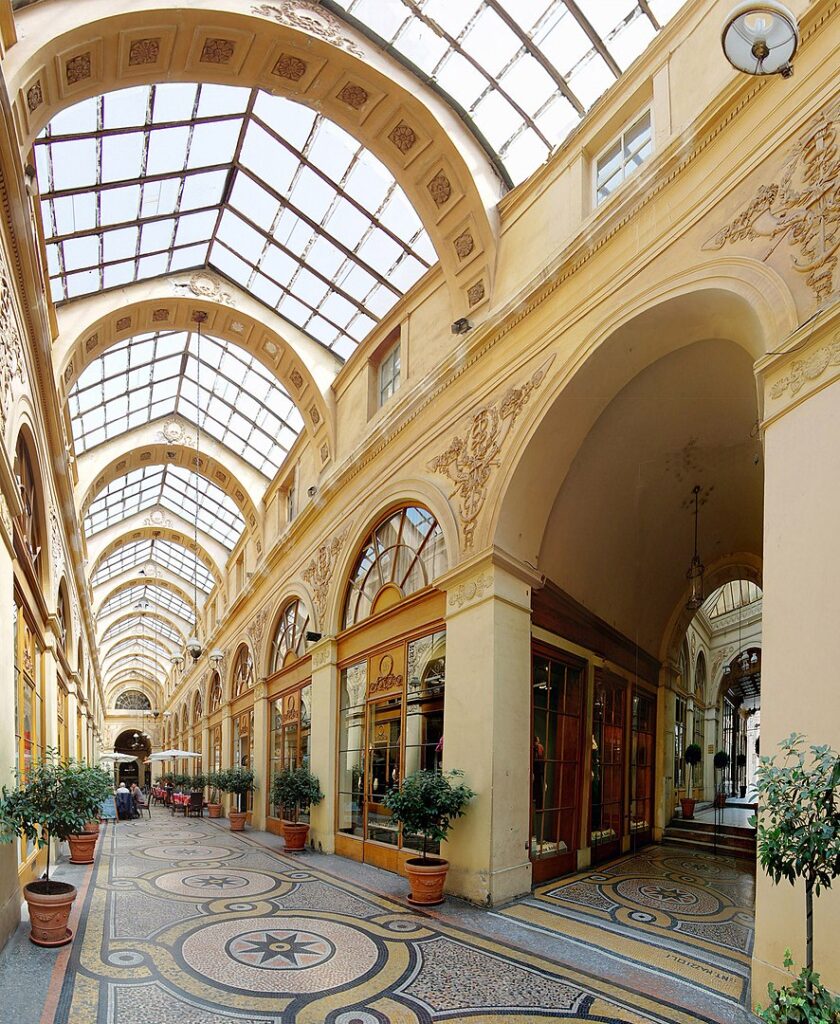
Galerie Vivienne, in the 2nd arrondissement, is 176 meters long. It was built in 1823 by Marchoux, President of the Chamber of Notaries, and designed by architect François Jean Delannoy with a neoclassical style with mosaics, paintings, and sculptures celebrating commerce.
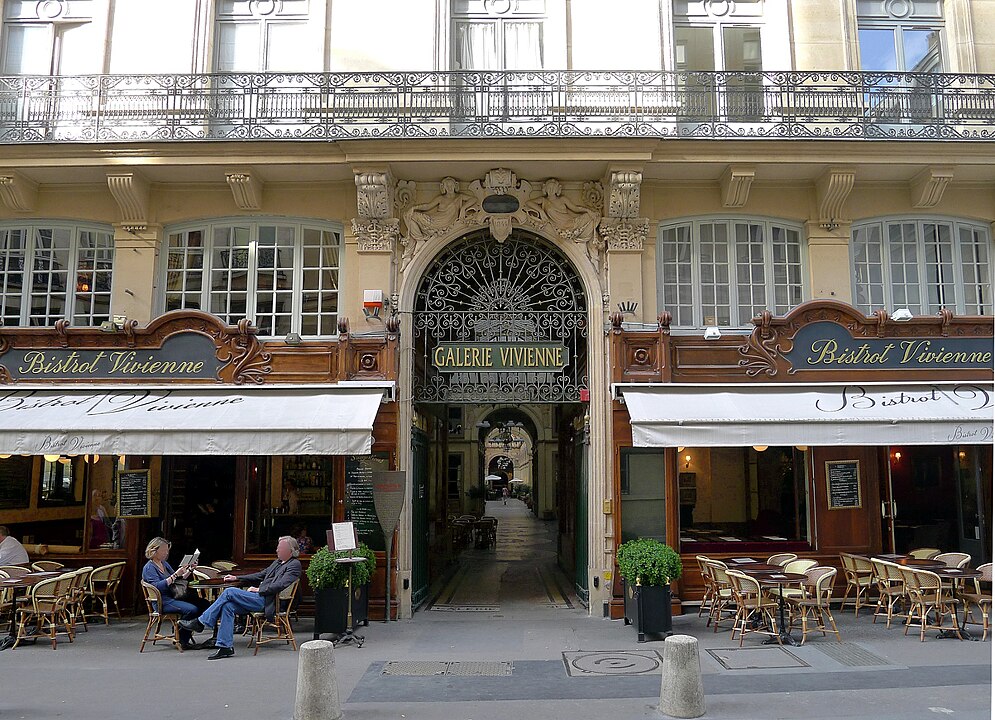
Originally filled with tailors, bookstores, and restaurants, it thrived due to its location near the Palais-Royal and Paris Bourse. It lost some appeal after Haussmann’s renovations, but became active again in the 1960s. It now houses fashion and decorative shops. It stands out for it elegant glass canopy and detailed decor.
Passage des Panoramas (1800)
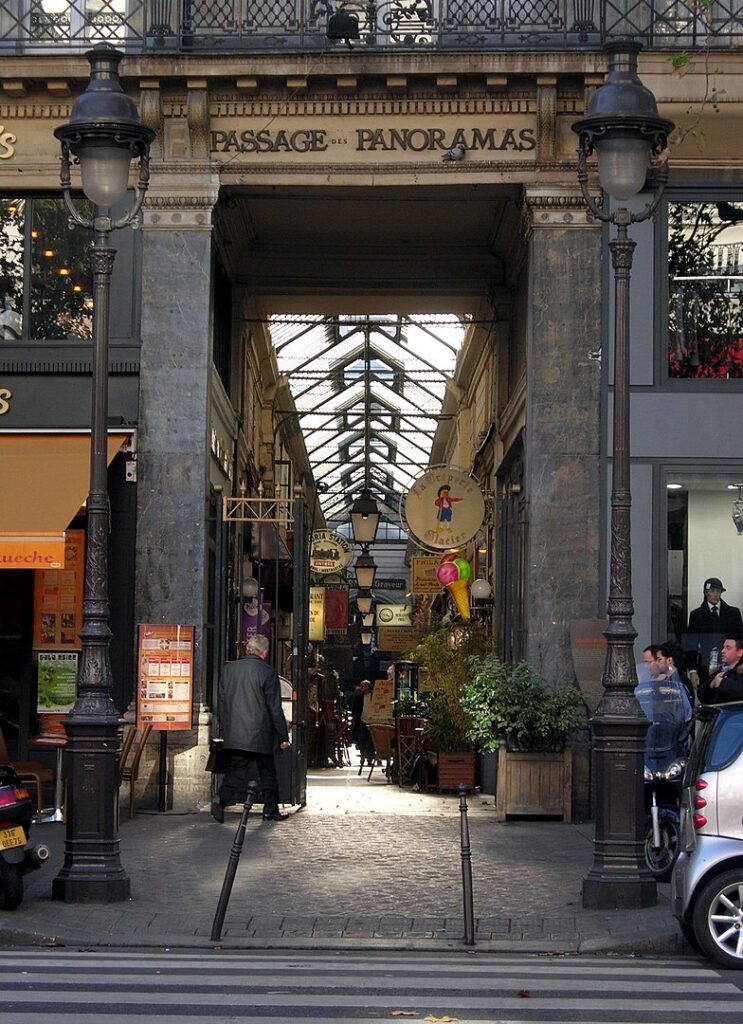
Passage des Panoramas, built in 1799 in the 2nd arrondissement, is Paris’s oldest covered passage, stretching 133 meters. Named for its panoramic painting exhibitions by Robert Fulton, it was innovative with glazed roofing and gas lighting in 1817. It hosted stamp merchants, engravers, and restaurants.
Renovated in the 1830s by architect Jean-Louis Victor Grisart, it gained the Saint-Marc and Variétés galleries. The section near Boulevard Montmartre is more richly decorated than the southern part. The gallery is featured in Zola’s novel Nana.
Passage Jouffroy (1845)
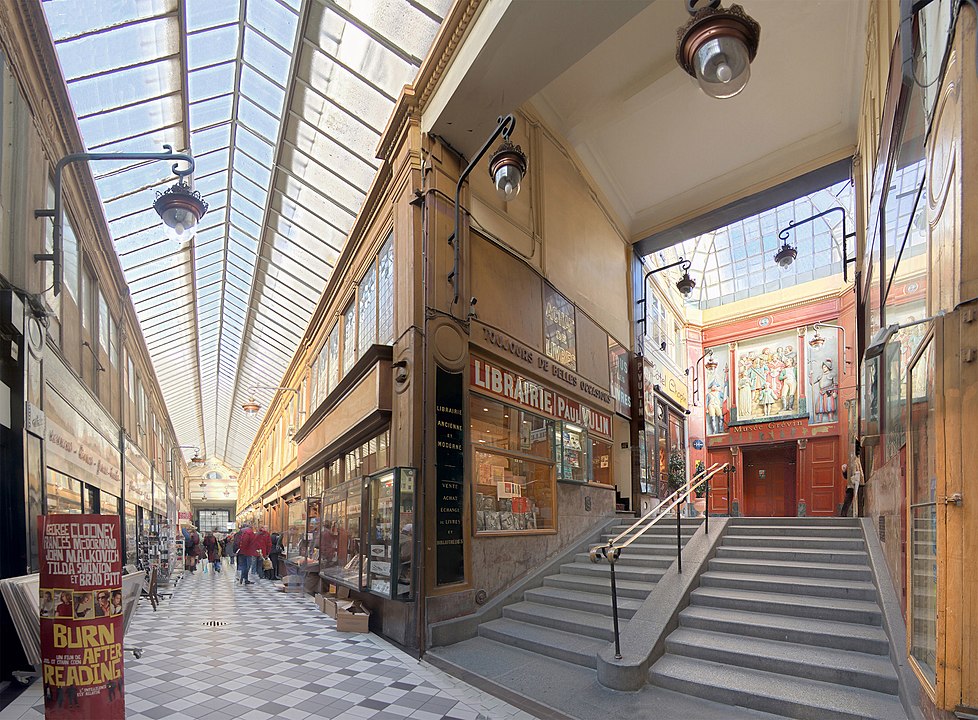
The 140-meter long Passage Jouffroy was built in 1845 in the 9th arrondissement, connecting Boulevard Montmartre and Rue de la Grange-Batelière. It was the first in Paris constructed entirely of metal and glass, with only wooden decorative elements. It has ground heating.
The Musée Grévin’s exit is inside the passage. Renovated in 1987, it kept its original paving and still showcases a glass canopy and geometric-patterned floor. Registered as a historic monument in 1974.
Passage Verdeau (1847)
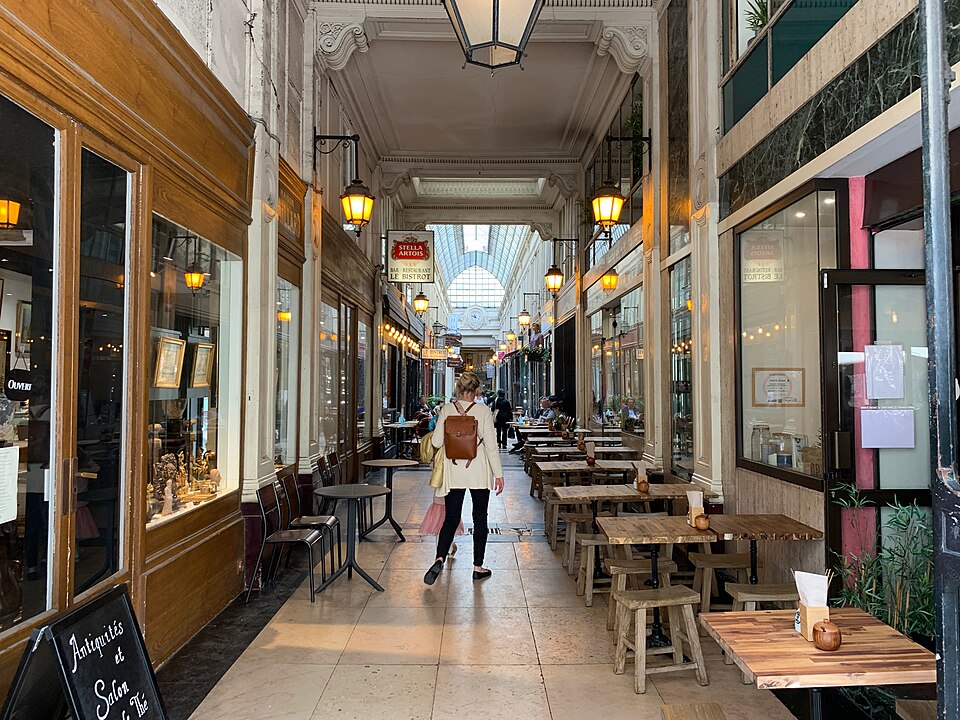
Passage Verdeau, in the 9th arrondissement, is 75 meters long and was built in 1846 by the Société du Passage Jouffroy. It connects Rue de la Grange-Batelière and Rue du Faubourg-Montmartre, extending from the Passage Jouffroy.
The gallery has a bright, neoclassical design with a high fishbone-patterned glass roof. Once overlooked, it gained popularity when antique dealers settled in after the opening of Hôtel Drouot, drawing collectors of old books and postcards.
Passage du Grand-Cerf (1825)
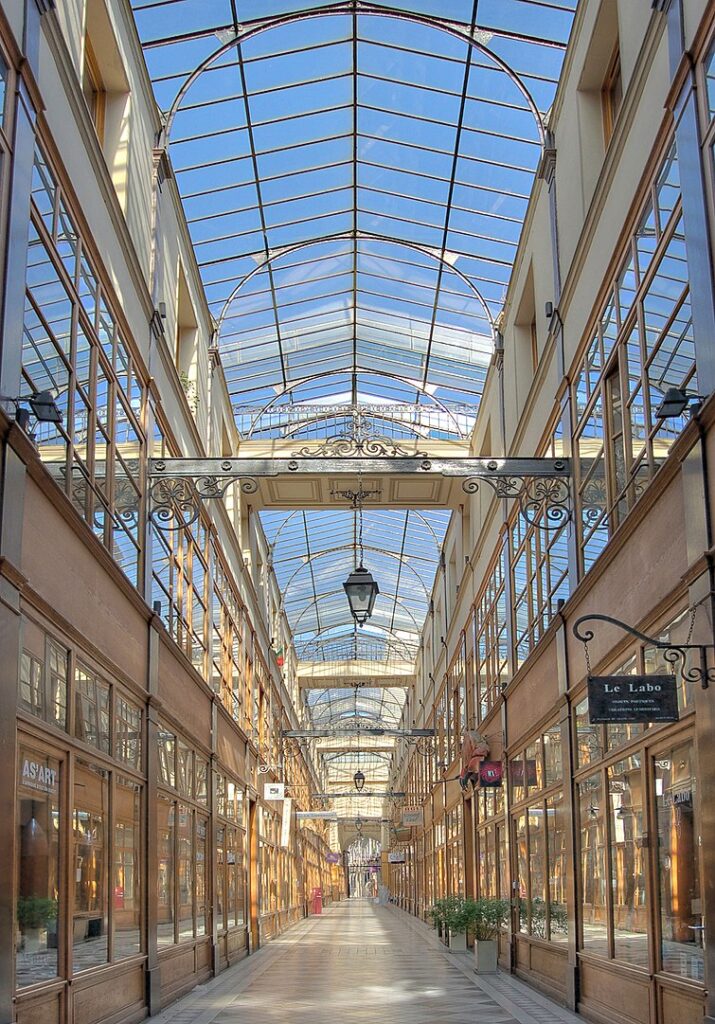
Located in the 2nd arrondissement between Rue Dussoubs and Rue Saint-Denis, Passage du Grand-Cerf is 117 meters long. Opened in 1825 on the site of the former Hôtel du Grand Cerf, it features a tall glass roof supported by metal structures, providing ample light. It houses artisan, design, and fashion shops.
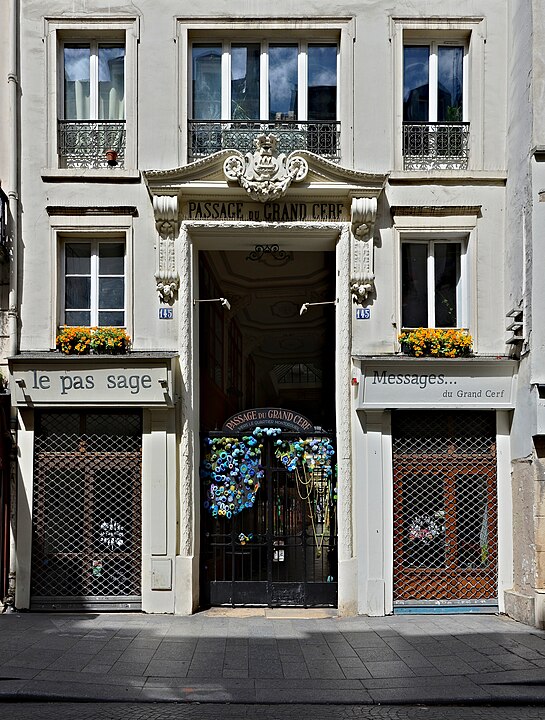
The passage was restored in 1985 after years of neglect. In 2016, it gained the nickname “Bitcoin Boulevard” as many of its shops began accepting bitcoin payments.
Galerie Véro-Dodat (1826)
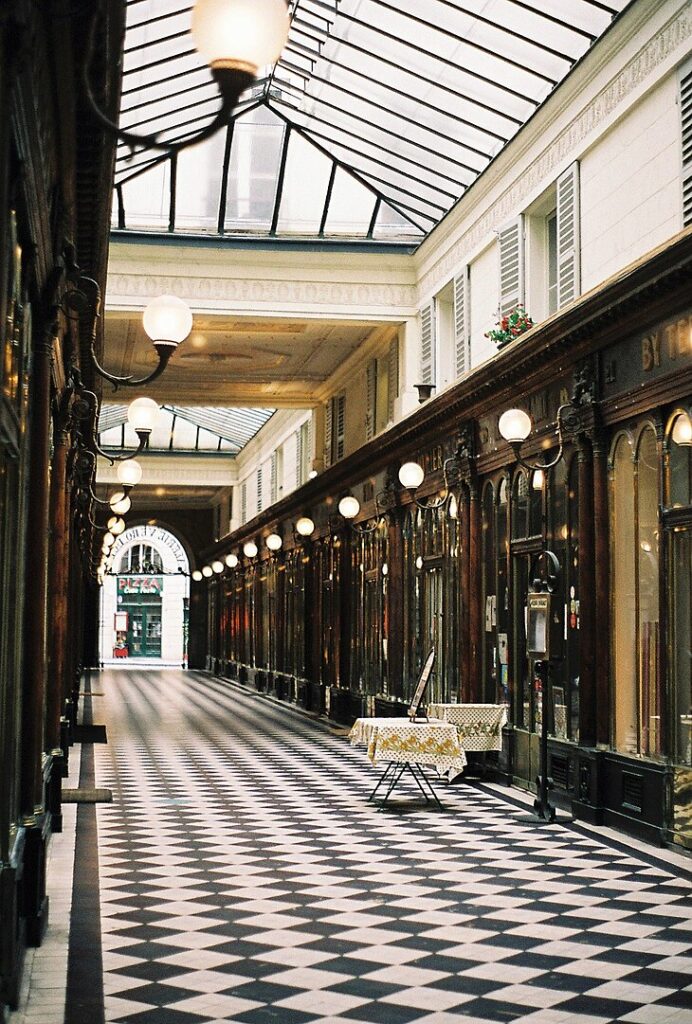
Galerie Véro-Dodat, built in 1826, is in the 1st arrondissement, connecting Rue Jean-Jacques Rousseau and Rue Croix-des-Petits-Champs. It’s 80 meters and has a neoclassical design with marble columns, gold trim, and a black-and-white tiled floor. It was one of the first passages to get gas lighting in 1830.
Notable figures like Gérard de Nerval and actress Rachel had ties to this historic passage. It was restored in 1997. The gallery houses antique shops and luxury designer boutiques, including Christian Louboutin.
Passage Brady (1828)
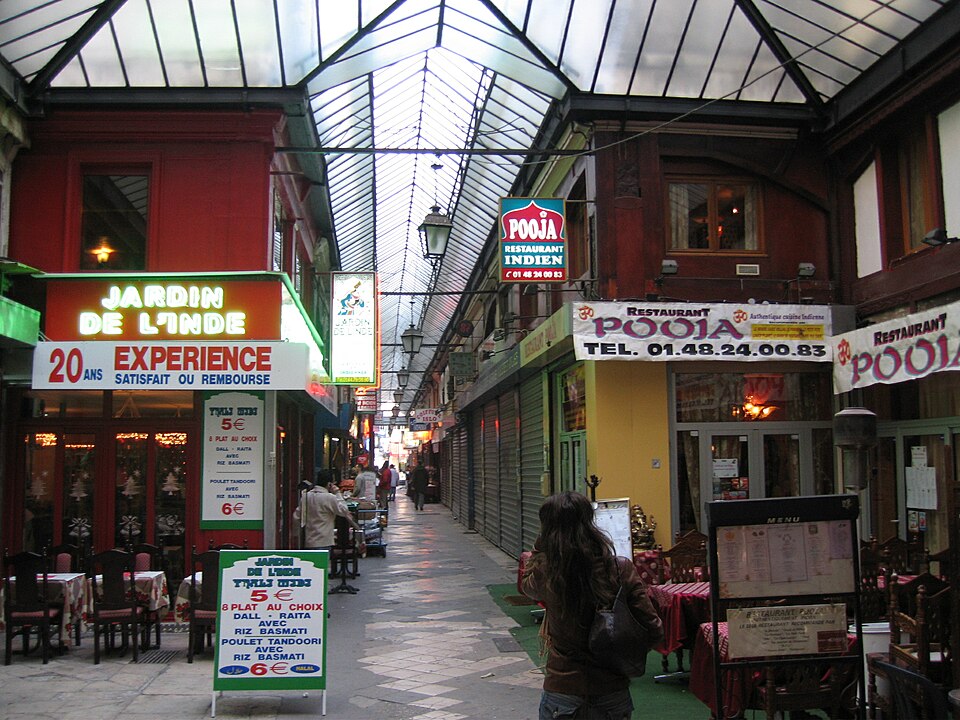
Passage Brady, in the 10th arrondissement, was built in 1828. It spans 216 meters and originally connected Rue du Faubourg-Saint-Denis to Rue du Faubourg-Saint-Martin. The passage was split into two sections when Boulevard de Strasbourg was constructed in 1852. Only the section at 46 Rue du Faubourg-Saint-Denis remains covered.
The passage is known for its Indo-Pakistani, Mauritian, and Réunionnais restaurants and shops.
Passage Choiseul (1829)
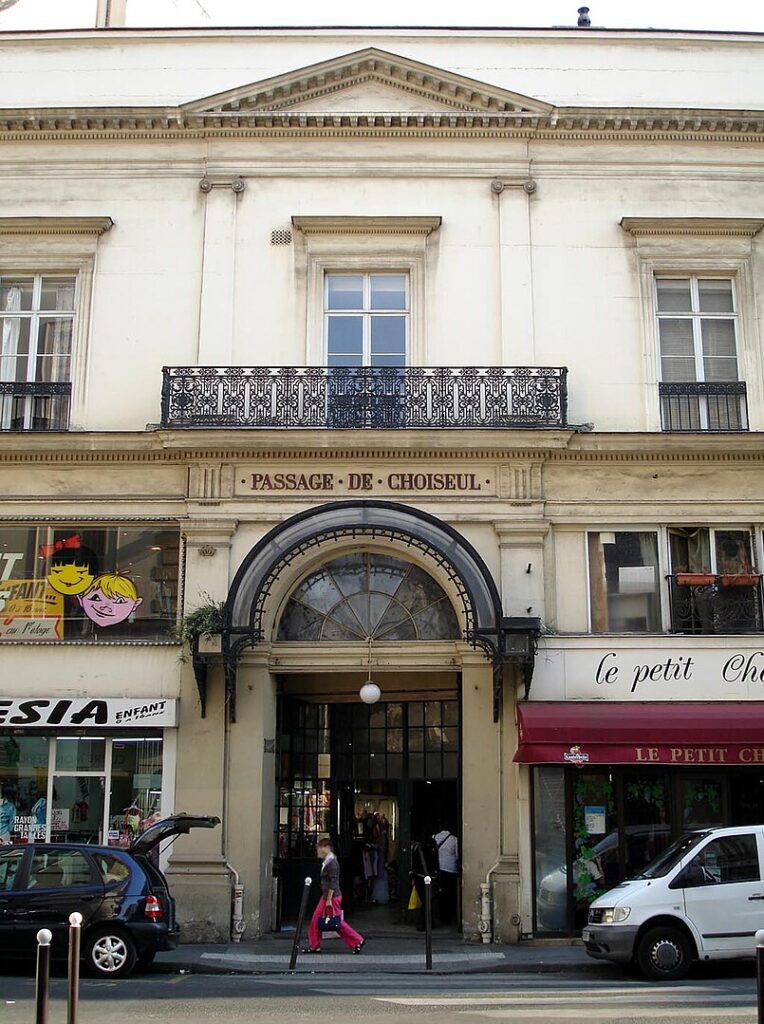
Passage Choiseul, built in 1826-1827 in the 2nd arrondissement, is 190 meters long – it’s the longest covered passage in Paris. It was designed by architects François Mazois and Antoine Tavernier. It was once home to writer Louis-Ferdinand Céline, who referenced it in his novels.
The passage fell into disrepair but revived in the 1970s when Kenzo opened a boutique. Now, it hosts restaurants, shops, and art galleries and the Théâtre des Bouffes-Parisiens. It was restored in 2012 and is a registered historic monument.
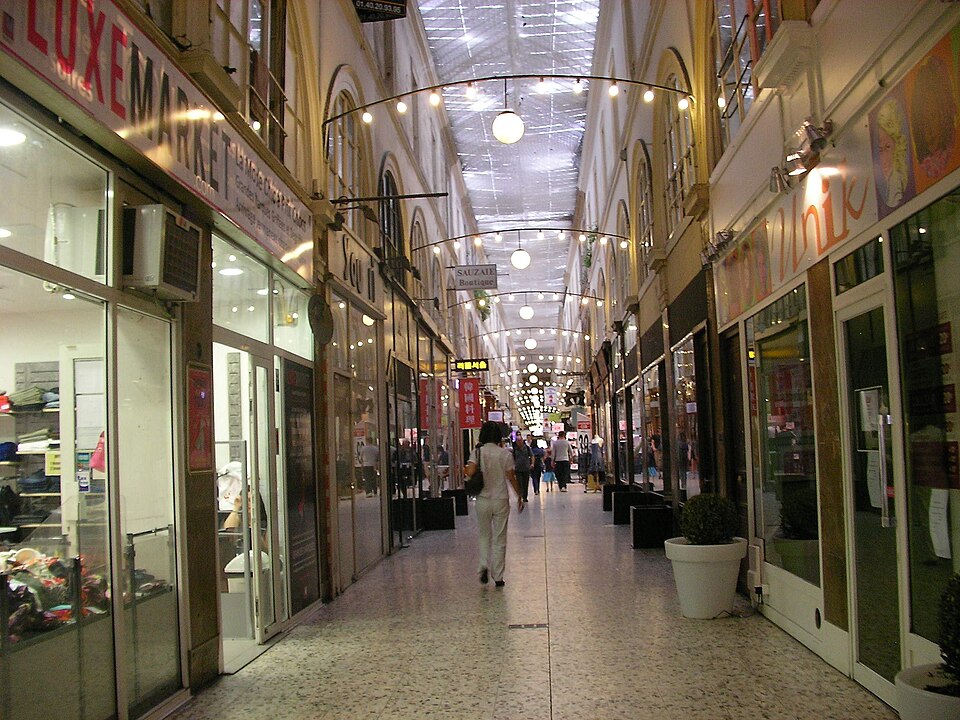
Cour du Commerce-Saint-André (1776)
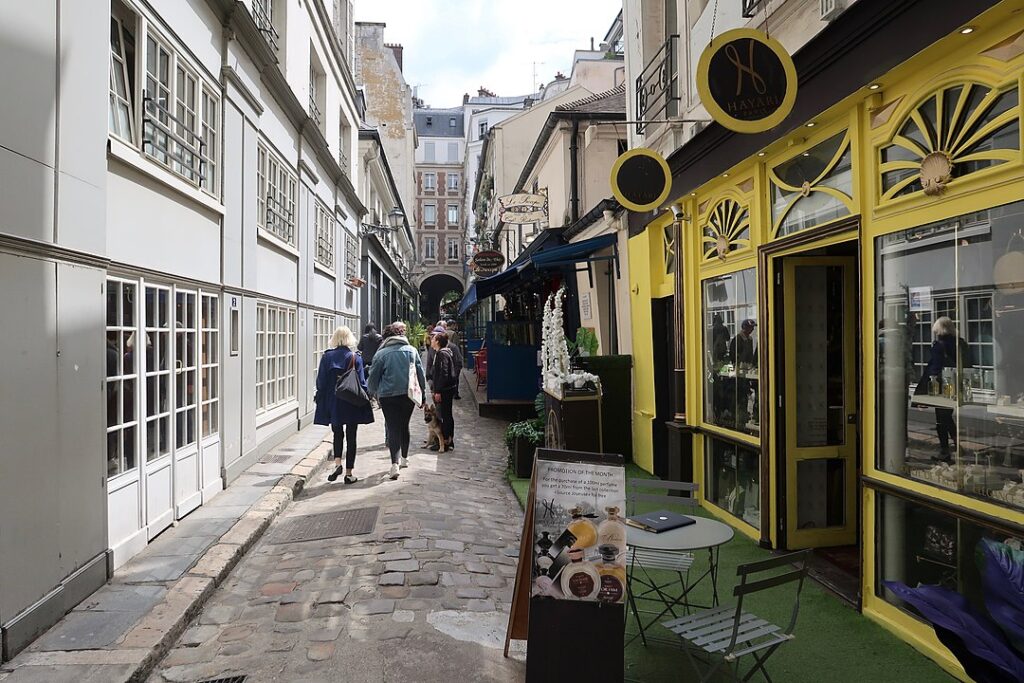
Cour du Commerce-Saint-André in the 6th arrondissement dates back to the 1730s. It provides a history path between Rue de l’Ancienne-Comédie and Rue Saint-André-des-Arts. Expanded in 1776 and later reconstructed in 1823, it hosts remnants of the Philippe Auguste city wall.
The passage was partially lost during the construction of Boulevard Saint-Germain in the 19th century. Notable sites include Le Procope, Paris’s oldest café and historical hangout of revolutionary figures like Marat and Guillotin.
Cité Berryer (Village Royal) (1745)
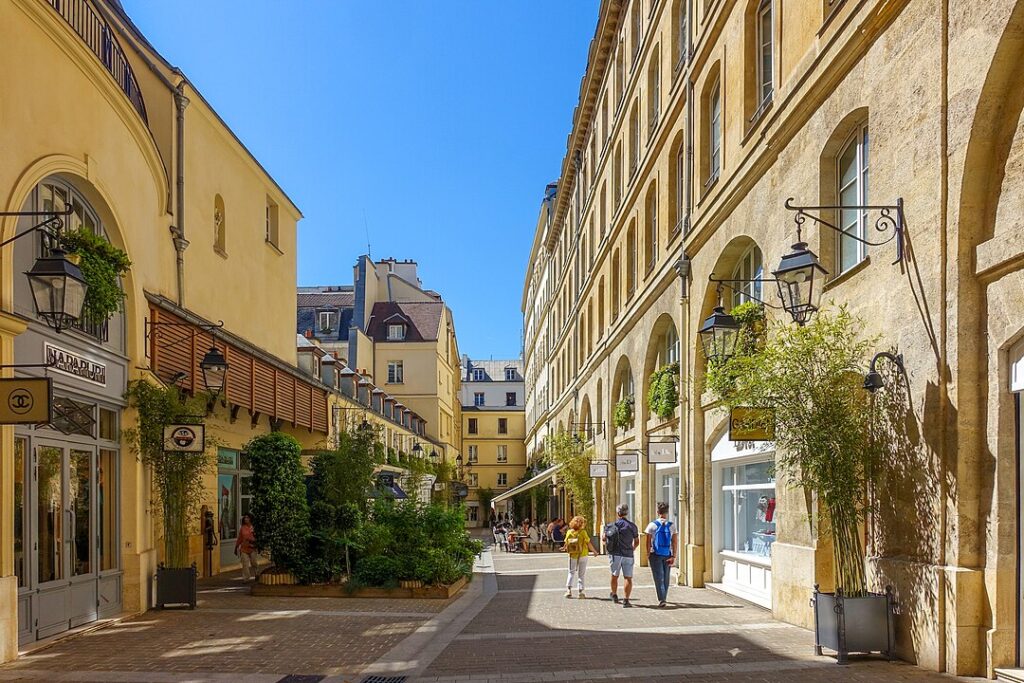
Cité Berryer, in the 8th arrondissement, runs between 25 Rue Royale and 24 Rue Boissy-d’Anglas. Originally called “Passage du marché d’Aguesseau,” it started as a modest market space in 1723 before moving to its current site in 1745.
This passage contrasts sharply with the upscale Rue Royale due to its more modest, hidden character. While surrounded by luxury boutiques and high-end restaurants, Cité Berryer retains a quieter, old-world charm, reflecting a less polished side of Paris’s history.

